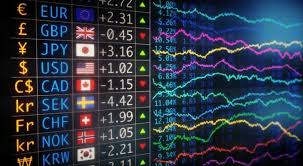Choosing the Right Trading Platforms for Forex 1819206922

Forex trading requires a reliable environment, and choosing the right trading platform is crucial for both beginners and seasoned traders. At trading platforms for forex https://seed2019.io/, the landscape of different trading platforms is explored to help you make an informed decision.
Understanding Forex Trading Platforms
Forex, or foreign exchange, is the world’s largest financial market, and it operates 24 hours a day, five days a week. Trading platforms serve as the gateway for retail and institutional traders to access this market. These platforms provide tools for executing trades, analyzing market trends, and managing risk. As such, selecting an appropriate platform is critical for trading success.
Key Features of Forex Trading Platforms
When evaluating different trading platforms for forex, there are several key features to consider:
- User Interface: A clean, intuitive user interface makes it easier to navigate the platform and execute trades swiftly.
- Charting Tools: Robust charting tools help traders analyze market trends, providing indicators and drawing capabilities to better understand price movements.
- Execution Speed: Fast execution speed is essential for forex trading, where every second can make a significant difference in trade outcomes.
- Mobile Compatibility: A mobile trading app enables traders to manage their accounts on-the-go, a necessity in today’s fast-paced world.
- Customer Support: Reliable and accessible customer support can help resolve issues promptly, reducing downtime during trading hours.
- Security Features: Given the money involved, it is crucial that the platform utilizes advanced security protocols to protect user data and funds.
Types of Forex Trading Platforms
Forex trading platforms can be categorized into three main types:
- Web-based Platforms: Accessible from any browser, they require no installation and offer flexibility for traders who switch between devices.
- Desktop Platforms: These platforms require installation on personal computers and often provide more advanced features and tools.
- Mobile Platforms: Designed specifically for smartphones and tablets, mobile platforms enable trading on the go.
Popular Forex Trading Platforms
Several platforms lead the market in terms of usability, features, and reliability:
1. MetaTrader 4 (MT4)
MetaTrader 4 is one of the most popular trading platforms globally, renowned for its ease of use and extensive capabilities. It provides advanced charting tools and a wide array of technical indicators, making it a favorite among forex traders. MT4 also supports automated trading through Expert Advisors (EAs), allowing for algorithmic trading strategies.
2. MetaTrader 5 (MT5)

MetaTrader 5 is the successor to MT4, offering additional features such as more timeframes, an economic calendar, and support for trading stocks and commodities alongside forex. It improves on MT4’s capabilities while maintaining a user-friendly interface.
3. cTrader
cTrader is known for its sleek design and advanced trading tools. It offers excellent charting capabilities, fast execution speeds, and is particularly favored by scalpers due to its depth of market feature, which provides insight into liquidity.
4. NinjaTrader
NinjaTrader is popular among traders who trade futures and forex. It offers advanced charting and analysis tools, along with the capability to automate trading strategies. The platform is particularly acclaimed for its extensive library of third-party plugins and add-ons.
Costs and Fees
Different platforms come with varying fee structures, which can significantly impact profitability. Here are common costs associated with trading platforms:
- Spreads: The difference between the bid and ask price can vary significantly from one platform to another. Platforms with tight spreads are generally preferred.
- Commissions: Some brokers charge a commission on trades in addition to the spread, which can affect overall costs.
- Account Fees: Be wary of any inactivity fees or maintenance fees that some brokers might charge, as these can add up over time.
Choosing the Right Forex Trading Platform
When it comes to choosing a forex trading platform, personal preference and trading style play significant roles. Here are steps to help guide your decision:
- Assess Your Trading Needs: Are you a beginner or an experienced trader? Do you trade frequently or occasionally? Understanding your trading style will help narrow down the choices.
- Test the Platform: Many brokers offer demo accounts that allow you to experience the platform risk-free. Test out its features and see how it fits your needs.
- Read Reviews and Ratings: Look for user reviews and ratings of the platform to gauge the experiences of other traders. Pay attention to feedback regarding reliability and customer support.
- Verify Regulation: Make sure the broker and platform are regulated by a reputable authority. This adds a layer of security to your trading operations.
Final Thoughts
The selection of a trading platform can significantly influence your trading experience in the forex market. By understanding the range of options available and conducting thorough research, you can choose a platform that aligns with your trading goals. Remember to consider essential features such as user experience, costs, and available tools, which can all contribute to a successful trading journey.
In one of the most dynamic markets in the world, having the right trading platform can be the difference between profit and loss. Choose wisely, and good luck with your trading endeavors!
